Lapis Lazuli Quality Factors
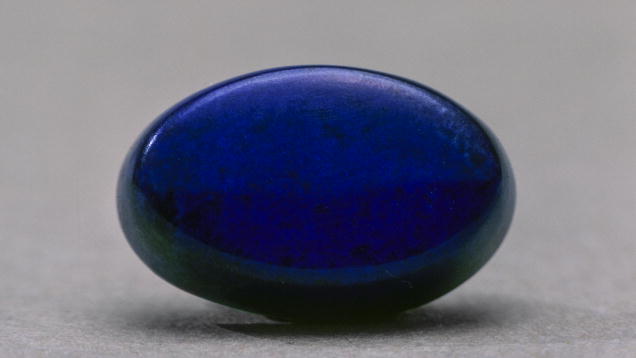
Color
Variously described as indigo, royal, midnight, or marine blue, lapis lazuli’s signature hue is slightly greenish blue to violetish blue, medium to dark in tone, and highly saturated. In its most-prized form, lapis lazuli has no visible calcite, although it might contain gold-colored pyrite flecks. If the flecks are small and sprinkled attractively throughout the gem, their presence doesn’t necessarily lower lapis lazuli’s value. The lowest-quality lapis looks dull and green, the result of an excess of pyrite. Lapis with white calcite streaks is less valuable.
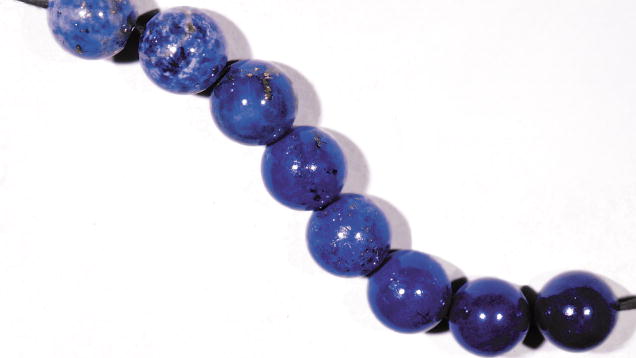
This collection of beads shows the range of lapis quality, from a pale blue with an excess of calcite or pyrite to a dark blue to violetish blue without visible calcite. Top-quality lapis can contain some pyrite. – Alan Jobbins
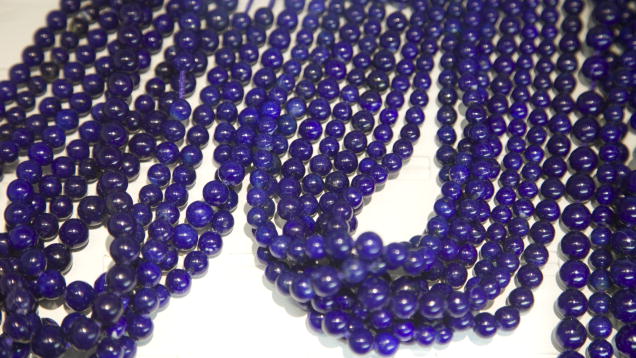
This collection of lapis beads displays the gem’s subtle variations in shades of blue. - Valerie Power
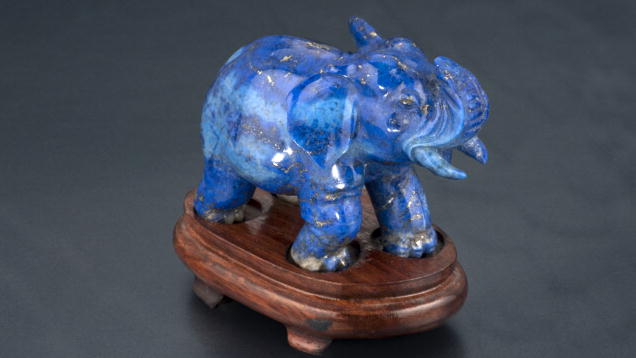
This adorable carving of a baby elephant shows off a variety of blue lapis shades. – Orasa Weldon, gift of William F. Larson
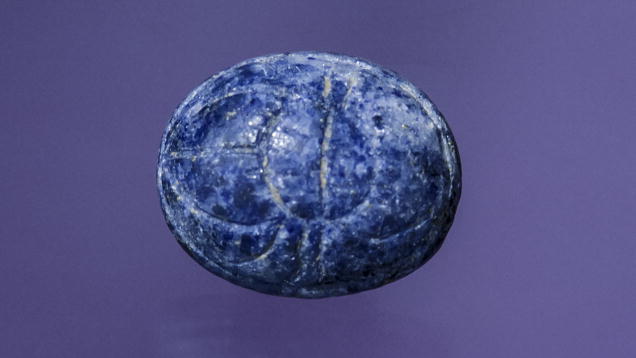
The pale color of the scarab beetle cabochon is typical of commercial-quality lapis lazuli. - Maha Tannous
Although many people associate lapis with dark blue, it’s also found in other blue shades, and even other hues. Its color can range from deep violet blue and royal blue to light blue to turquoise blue to a greenish blue. The combination of different minerals in the aggregate determines the color. For example, the presence of lazurite produces lapis lazuli’s prized royal blue color, while a mineral called afghanite creates a pale blue shade.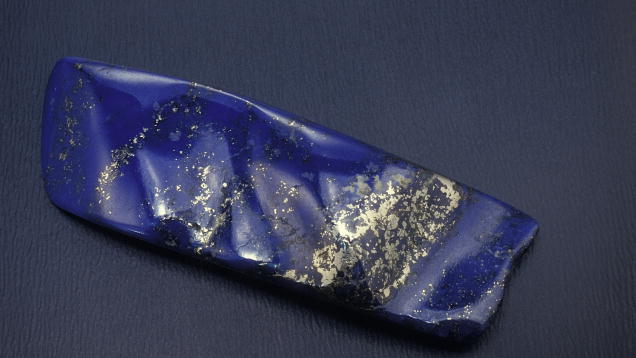
The saturated royal blue of this freeform piece is an example of lapis lazuli’s finest color. The pyrite inclusions are scattered attractively in some areas, but in other areas they’re so dense that they cloud the beauty of the gem’s bodycolor. - Robert Weldon, courtesy Gary Bowersox
Lapis trade grades are based on color and the presence or absence of calcite or pyrite. Lapis types on the market today, in order of their value, are:- Persian or Afghan—Intense, uniform, medium dark, slightly violetish blue. Contains little or no pyrite, and no calcite
- Russian or Siberian—Various tones and intensities of blue. Contains pyrite and might contain some calcite
- Chilean—Often tinged or spotted with green, with obvious calcite matrix
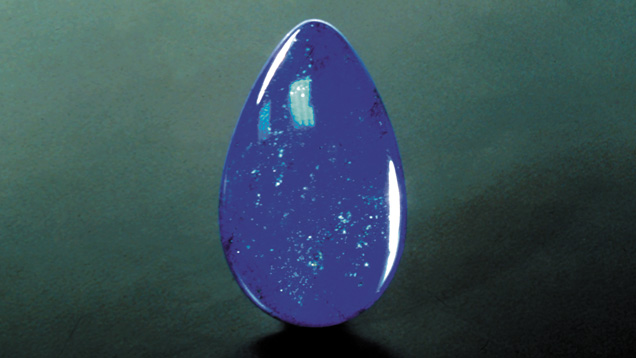
The most valued lapis contains little or no pyrite and no calcite, and is an intense, uniform, medium-dark, slightly violetish blue. This quality is known in the trade as Afghan. – Bart Current

This cabochon’s less intense color and mottled calcite content make it less valuable than a gem with deep, intense color. - Robert Weldon
A gemstone’s appearance might be described using an adjective that refers to a country or region, but that doesn’t necessarily mean the gem is actually from that area. Thus, lapis with a lot of white calcite spots and many green patches might be sold as “Chilean,” but this doesn’t mean it’s really from Chile.Cut
For thousands of years, lapis has been fashioned to show off its rich, dark color. Typically, lapis cutting styles for use in jewelry are cabochons, beads, inlays, and tablets, as well as decorative carvings.
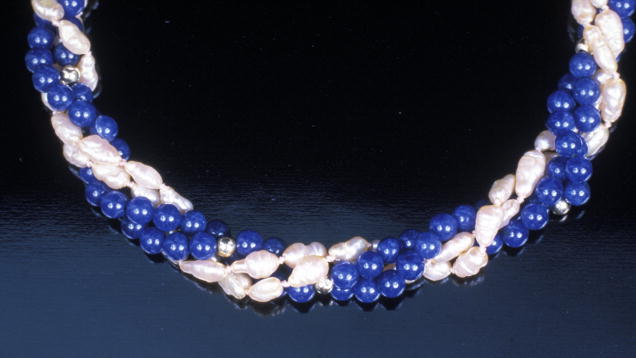
Lapis lazuli beads contrast beautifully with freshwater cultured pearls in this lovely necklace. - Mike Havstad
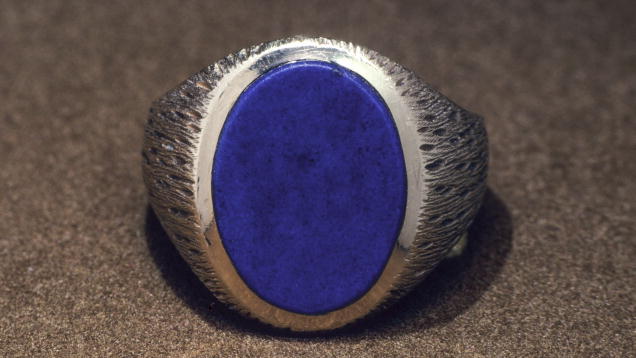
A lapis tablet graces this man’s ring.
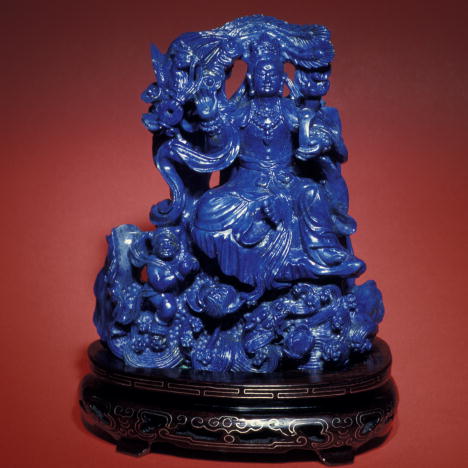
Lapis lazuli has inspired gem carvers for centuries.
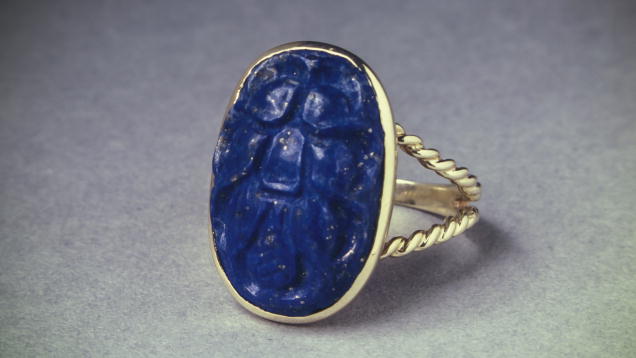
An attractive design has been carved into this ring’s lapis cabochon.
Today, lapis is frequently fashioned into freeform and nature-themed sculptures. Some of these carvings become wearable art, others are purely decorative.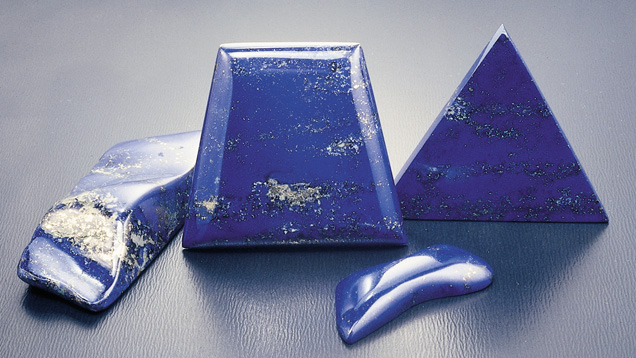
Freeform sculptures show off the beauty of high-quality lapis. - Robert Weldon, courtesy Gary Bowersox
ClarityLapis frequently contains varying amounts of whitish calcite matrix—the host rock that surrounds the gem—or flecks or veins of glinting yellow pyrite, or both. The gem can also have a smoothly uniform bodycolor, free of visible pyrite and calcite.
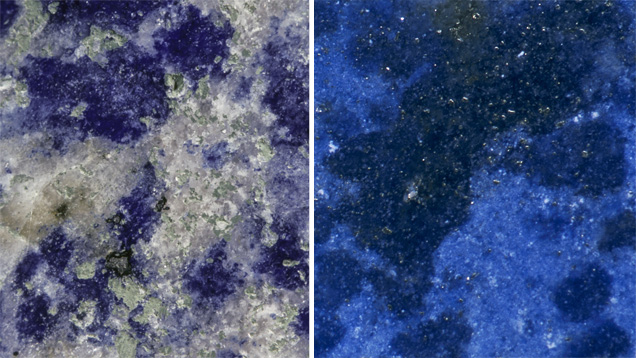
Calcite shows up as white flecks or streaks in the aggregate (left), while the golden, metallic-looking spots are pyrite (right). - John Koivula (right)
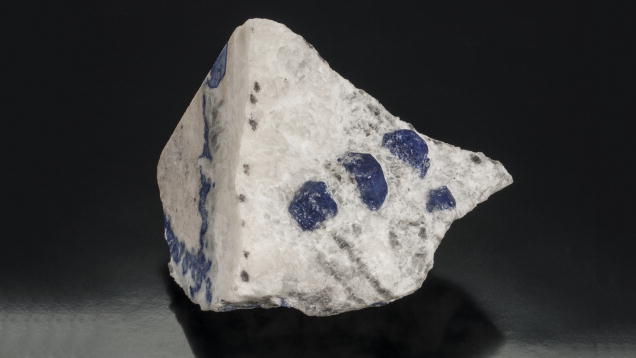
These lapis lazuli specimens are surrounded by their white calcite matrix host rocks. – Orasa Weldon, gift of William and Jeanne Larson

These two blocks of lapis rough vary greatly in value. The block on the right will sell at a much lower price than the one on the left due to its high calcite presence and its lighter shade of blue. - Maha Tannous
Carat WeightLapis rough can be very large, so large fashioned stones are more common than with many other gemstones. Larger sizes are also more likely to be carved into art objects, used in designer jewelry, or cut into calibrated sizes.

Large lapis rough can be fashioned into spheres or tablets. Lapis lazuli spheres are popular among collectors. - Robert Weldon
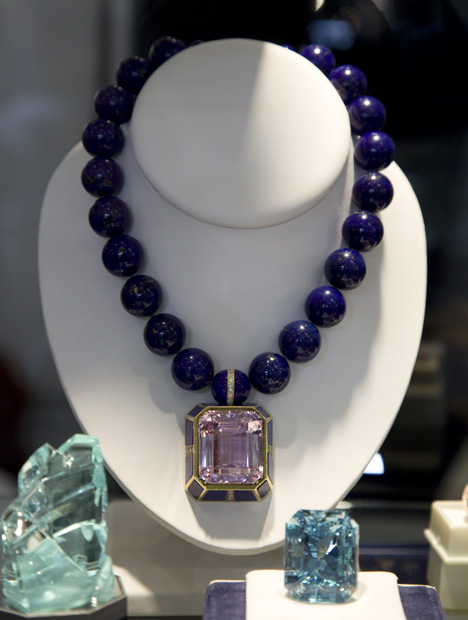
This display of gems from Afghanistan features a large kunzite pendant suspended from
a necklace of 18 mm lapis beads. - Valerie Power, courtesy ASMED/Gem Hunters Corp.
a necklace of 18 mm lapis beads. - Valerie Power, courtesy ASMED/Gem Hunters Corp.



